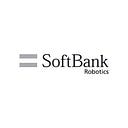How Multifamily Real Estate Can Leverage Robotics
There are almost 2.5 million multifamily properties in the United States and the demand for rental units is increasing steadily. Real estate developers will need to add 325,000 new units per year through 2030 just to meet market demand.
But despite a booming rental market, asset managers and building operators still face an enormous amount of pressure to drive net operating income to higher levels. Multifamily real estate is a game of inches, where a vacant day here or there can have a substantive impact on the overall performance of an asset.
Today’s operators have a huge opportunity to drive NOI through more effective sales and marketing. Millennials are overtaking Baby Boomers as the driving force behind the rental economy, and the demographic shift has resulted in an evolution of buyer demands that the current real estate marketing paradigm isn’t optimized to handle. For multifamily marketers, the secret to successfully meeting millennials’ expectations may actually lie in the least expected of places: humanoid robotics.
How Humanoid Robots Can Optimize Millennial Conversions
In cities like San Francisco, Boston, and New York, over 60% of the population are renters. But even the largest property managers are still highly reliant on a human touch to manage the influx of market interest at the door. Placed in a building’s lobby, humanoid robots — like SoftBank Robotics’ Pepper — become part leasing agent, and part community manager, providing building operators some significant benefits:
- Showcase technology in your building and brand: the new generation of renters values technology more than ever, and having a hi-tech feel is critical to establishing credibility with potential residents. The presence of a humanoid robot immediately establishes that technology credibility — Pepper employs advanced emotional recognition and natural language processing capabilities to engage guests and residents in a dynamic, playful, and memorable two-way conversation that can offer education about the building, neighborhood, and overall lifestyle a resident can expect.
- Capture every tour, even walk-ins: as your community managers and leasing agents handle a plethora of responsibilities, it’s easy for them to get outnumbered. What happens if you get one resident issue, one scheduled tour, and one walk-in during the same 30 minute window? Odds are that walk-in is going to be left waiting and leave with a negative impression of your property. Like chatbots online, humanoid robots are always available, 24/7, 365. Pepper functions as an always-on host, creating an engaging experience for future residents, providing virtual tours, answering questions, and capturing valuable information. While entertaining visitors and guiding them through the first stages of the marketing funnel, the humanoid robot can notify the community manager and hand-off the prospect.
- Improve communication with visitors and residents: a whopping 91% of renters will use their mobile devices to search for apartments, and those smartphones outperform desktop conversion rates by 64%. Additionally, millennials are driving an historic increase in mobile messaging usage that is now surpassing social media, video, and email usage. Pepper can capture mobile numbers and integrate with a property manager’s CRM to communicate with potential residents via their preferred method, automatically alerting them with updates and special offers to keep them informed and engaged.
- Offer a unique amenity to multifamily tenants: a concierge is something you typically see at a fine hotel. For most multifamily properties, it’s obviously cost prohibitive, as the management and payroll overhead simply doesn’t justify the spend. However, humanoid robots are a cost-effective, low-maintenance way to offer residents an automated, personal expert in the community. Pepper already provides many concierge services in the hospitality sector: directing guests, promoting special offers and products, and providing educational information. The technology is poised to augment the multifamily experience, as well.
Getting Started with Your Properties
Humanoid robots like Pepper are surprisingly affordable and require minimal configuration and training to get started. These devices are an effective, scalable way to introduce automation into a manual workflow, deliver a world-class experience to your current and future residents, and establish credibility for your building and brand as a technology innovator.
Leading multifamily managers can introduce advanced technologies like robotics into everyday operations slowly and without disruption to a busy workflow. One of the most important factors to the decision will be selecting a vendor that is more than just a hardware provider; they need to be a business partner. To learn more about how SoftBank Robotics is guiding the world’s leading property managers into digital innovation, please contact us to start a conversation.
